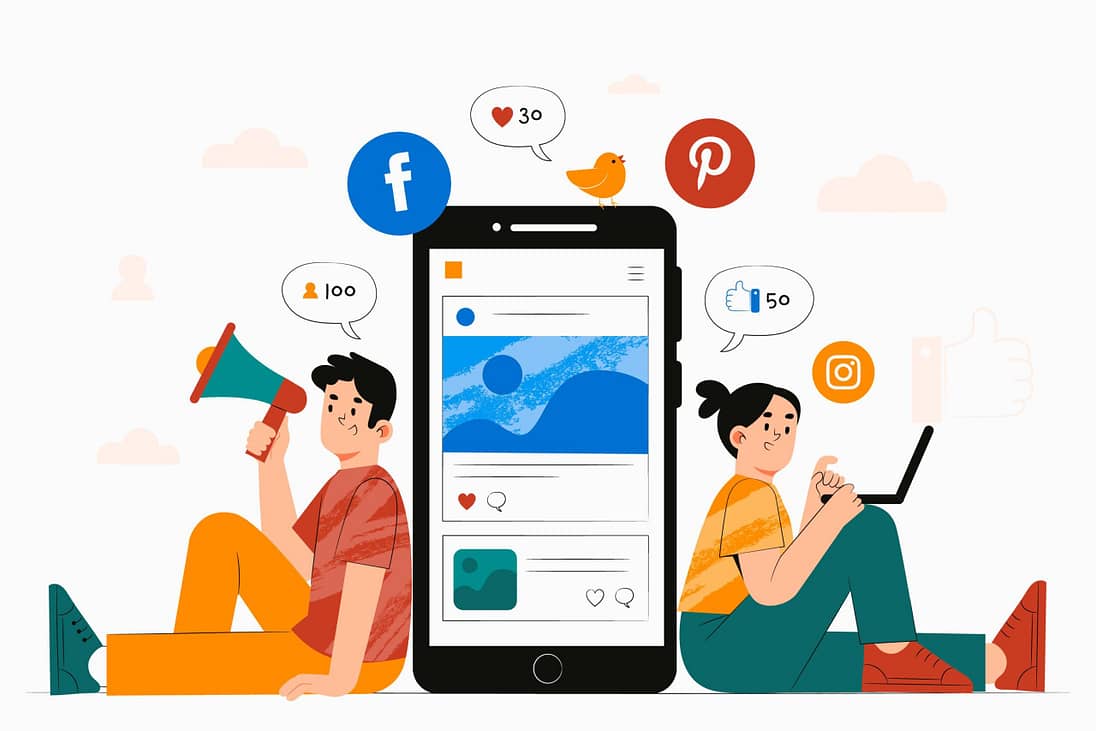Windows 10 activator download 64 bit to activate your OS. ✓ Get full functionality, updates, and personalization options for Windows 10 Pro. ➔ Download now!
Conversion Rate Optimization: Techniques to Improve Website Performance
In the world of digital marketing, conversion rate optimization (CRO) plays a crucial role in maximizing the effectiveness of your website. By focusing on improving the percentage of visitors who take a desired action, such as making a purchase or filling out a form, you can drive significant business growth. In this blog post, we will explore effective techniques for optimizing your website’s conversion rate and improving its overall performance. By implementing these strategies, you can enhance user experience, increase conversions, and achieve your business objectives.
- Analyze User Behavior with Web Analytics :
To optimize your website’s conversion rate, start by analyzing user behavior using web analytics tools like Google Analytics. Understand how users navigate through your site, identify bottlenecks, and discover pages with high bounce rates or low engagement. Analyzing data on user flow, conversion funnels, and exit points helps you identify areas for improvement and prioritize optimization efforts.
- Implement Clear and Compelling Call-to-Actions :
Effective call-to-actions (CTAs) are critical for driving conversions. Use clear and concise language in your CTAs, compelling visitors to take the desired action. Place CTAs strategically, ensuring they are visible and prominently displayed on relevant pages. Experiment with different CTA designs, colors, and wording to determine what resonates best with your audience. A well-crafted CTA guides users through their journey and increases the likelihood of conversion.
- Simplify and Streamline the Conversion Process :
Make the conversion process as easy and seamless as possible for your visitors. Minimize the number of steps required to complete a conversion, whether it’s making a purchase, filling out a form, or subscribing to a newsletter. Eliminate unnecessary form fields, provide clear instructions, and optimize your checkout process to reduce friction and enhance user experience. By simplifying the conversion process, you remove barriers that may hinder users from completing the desired action.
- Utilize Social Proof and Trust Signals :
Build trust and credibility with your audience by incorporating social proof and trust signals throughout your website. Display customer testimonials, reviews, and ratings to demonstrate the positive experiences of others. Showcase trust badges, security certifications, or guarantees to instill confidence in your visitors. Highlight any relevant partnerships, certifications, or industry recognition to further establish credibility. By leveraging social proof and trust signals, you create a sense of reliability and encourage visitors to convert.
- Conduct A/B Testing and Experimentation :
A/B testing is a powerful technique for optimizing your website’s conversion rate. Test different variations of your web pages, headlines, layouts, colors, or CTAs to identify the most effective elements. By running experiments and analyzing the results, you can make data-driven decisions to improve your website’s performance. Continuously test and refine your website to discover what resonates best with your audience and drives the highest conversion rates.
Conclusion :
Conversion rate optimization is an ongoing process that involves analyzing user behavior, optimizing the user experience, and continuously testing and experimenting. By implementing techniques such as analyzing user behavior, implementing compelling CTAs, simplifying the conversion process, utilizing social proof, and conducting A/B testing, you can improve your website’s performance and increase conversions. Embrace the power of conversion rate optimization to enhance user engagement, drive meaningful actions, and achieve your business goals. Continually refine your website to create a seamless experience that inspires visitors to convert.
Mobile Marketing Strategies: Reaching Customers on the Go
In today’s fast-paced digital world, mobile devices have become an integral part of our daily lives. As a result, mobile marketing has emerged as a powerful strategy for businesses to connect with their target audience on the go. With the right mobile marketing strategies, businesses can reach customers at the right time and in the right place, leveraging the potential of mobile devices. In this blog post, we will explore effective mobile marketing strategies to help you reach and engage customers while they are on the move. By implementing these strategies, you can maximize your mobile marketing efforts and drive business growth.
- Create a Mobile-Optimized Website :
A mobile-optimized website is the foundation of a successful mobile marketing strategy. Ensure that your website is responsive, meaning it adapts seamlessly to different screen sizes and devices. Optimize your website’s loading speed, simplify navigation, and streamline the checkout process to provide a smooth and user-friendly experience for mobile users. A mobile-optimized website not only enhances user experience but also improves your search engine rankings, as search engines prioritize mobile-friendly websites in mobile search results.
- Implement SMS Marketing :
SMS marketing is a highly effective mobile marketing strategy for reaching customers on the go. Collect permission-based phone numbers from your customers and utilize SMS campaigns to deliver targeted and timely messages. Send personalized offers, exclusive discounts, or time-sensitive notifications to engage with your audience and drive immediate action. Ensure that your SMS messages are concise, valuable, and provide a clear call-to-action to maximize engagement and conversions.
- Leverage Mobile Apps :
Mobile apps provide a unique opportunity to engage with customers directly on their smartphones. Develop a mobile app that offers value to your target audience, such as exclusive content, personalized recommendations, or convenient purchasing options. Utilize push notifications to deliver relevant updates, promotions, or reminders to users. Encourage app downloads through in-app incentives or partnerships. A well-designed and feature-rich mobile app can help you build brand loyalty, drive repeat purchases, and deepen customer engagement.
- Embrace Location-Based Marketing :
Location-based marketing leverages the power of mobile devices’ GPS capabilities to deliver targeted and relevant marketing messages based on a user’s physical location. Utilize geo-targeting and geofencing techniques to send location-specific offers, recommendations, or event notifications to potential customers in a particular area. This strategy is particularly effective for businesses with physical locations, as it can drive foot traffic and increase in-store conversions. By delivering personalized and contextually relevant messages, you can effectively reach customers on the go and enhance their overall mobile experience.
- Utilize Mobile Advertising :
Mobile advertising allows you to reach customers directly on their mobile devices through various ad formats such as display ads, video ads, or native ads. Utilize mobile ad networks, social media advertising platforms, or mobile search ads to target your audience based on demographics, interests, or behaviors. Optimize your ad creative and copy for mobile screens, ensuring they are visually appealing, concise, and capture attention quickly. Continuously monitor the performance of your mobile ad campaigns, making data-driven optimizations to improve click-through rates, conversions, and overall ROI.
Conclusion :
Mobile marketing provides businesses with a unique opportunity to reach customers on the go and deliver targeted and relevant messages. By creating a mobile-optimized website, implementing SMS marketing, leveraging mobile apps, embracing location-based marketing, and utilizing mobile advertising, you can effectively connect with your target audience in the mobile-driven world. Embrace mobile marketing strategies to enhance customer engagement, drive conversions, and stay ahead in the ever-evolving digital landscape. By catering to the mobile preferences of your customers, you can create seamless and personalized experiences that make a lasting impact. Embrace the power of mobile marketing and unlock the potential of reaching customers on the go.
“Understanding Google Ads: Maximizing ROI with Pay-Per-Click Advertising”
In the realm of digital advertising, Google Ads has emerged as a powerful platform that allows businesses to reach their target audience and drive measurable results. By utilizing pay-per-click (PPC) advertising, businesses can maximize their return on investment (ROI) and achieve their marketing objectives. In this blog post, we will delve into the intricacies of Google Ads and provide valuable insights on how to optimize your campaigns to maximize ROI. By understanding the key concepts and implementing best practices, you can unlock the full potential of Google Ads and drive meaningful business growth.
- Conduct Thorough Keyword Research:
Keyword research is the foundation of successful Google Ads campaigns. Identify relevant keywords that align with your business offerings and target audience’s search queries. Utilize keyword research tools like Google Keyword Planner, SEMrush, or Moz Keyword Explorer to discover high-volume, low-competition keywords. Incorporate these keywords into your ad copy, headlines, and landing page content to improve ad relevance and increase the chances of reaching your target audience.
- Optimize Ad Campaign Structure :
A well-structured ad campaign is vital for maximizing ROI. Organize your campaigns into specific themes or product categories, and create ad groups that group related keywords together. This allows you to create targeted ad copy and landing pages for each ad group, resulting in higher ad relevance and improved user experience. By optimizing your campaign structure, you can increase the Quality Score of your ads, which positively impacts your ad rank and lowers your cost per click (CPC).
- Craft Compelling Ad Copy :
Captivating ad copy is crucial for attracting clicks and driving conversions. Write concise and compelling headlines that capture attention and communicate your unique value proposition. Highlight the benefits of your products or services, and use persuasive language to encourage users to take action. Incorporate relevant keywords into your ad copy while maintaining a natural and engaging tone. Experiment with different ad variations to find the most effective messaging that resonates with your target audience.
- Utilize Ad Extensions :
Ad extensions provide additional information and enhance the visibility of your ads. Take advantage of various ad extensions offered by Google Ads, such as sitelink extensions, call extensions, or location extensions. These extensions allow you to display additional links, phone numbers, or addresses in your ads, providing more opportunities for users to engage with your business. By utilizing ad extensions, you can increase the visibility and relevance of your ads, driving higher click-through rates and conversions.
- Continuously Monitor, Analyze, and Optimize :
Regular monitoring, analysis, and optimization are essential for maximizing ROI with Google Ads. Track key metrics such as click-through rates (CTR), conversion rates, cost per conversion, and return on ad spend (ROAS). Identify underperforming keywords, ads, or landing pages, and make data-driven optimizations. Test different ad variations, landing page designs, or bidding strategies to improve performance over time. By constantly monitoring and refining your campaigns, you can ensure that your budget is allocated effectively and drive higher ROI from your Google Ads investments.
Conclusion :
Understanding and effectively utilizing Google Ads is instrumental in maximizing ROI and achieving your advertising goals. By conducting thorough keyword research, optimizing your campaign structure, crafting compelling ad copy, utilizing ad extensions, and continuously monitoring and optimizing your campaigns, you can harness the full potential of Google Ads. Embrace the power of pay-per-click advertising to reach your target audience, drive conversions, and propel your business forward in the competitive digital landscape.
Unlocking the Potential of Video Marketing: Tips and Trends
In the ever-evolving digital world, video marketing has emerged as a dynamic and engaging strategy for businesses to connect with their target audience. With the rise of platforms like YouTube and the widespread use of social media, videos have become a powerful medium for storytelling, brand promotion, and driving conversions. In this blog post, we will explore the potential of video marketing and provide you with valuable tips and current trends to help you unlock its full power. By implementing these strategies, you can create compelling videos that captivate your audience and deliver remarkable results.
- Know Your Audience and Set Clear Objectives:
The foundation of successful video marketing lies in understanding your target audience and setting clear objectives. Identify the demographics, interests, and preferences of your audience to tailor your videos to their needs. Establish specific goals such as increasing brand awareness, driving website traffic, or boosting product sales. Clear objectives will guide your video content creation and help you measure the success of your campaigns.
- Craft Engaging and Valuable Video Content :
To capture and maintain your audience’s attention, focus on creating engaging and valuable video content. Tell compelling stories that resonate with your viewers and evoke emotions. Keep your videos concise, ensuring they deliver the intended message efficiently. Incorporate visual elements, such as appealing graphics or stunning cinematography, to enhance the viewing experience. Provide valuable information, tips, or entertainment that aligns with your audience’s interests and addresses their pain points.
- Optimize Videos for Search Engines :
Just like written content, videos can be optimized for search engines. Conduct keyword research to identify relevant keywords and incorporate them naturally into your video titles, descriptions, and tags. Use descriptive and keyword-rich titles that accurately represent the content. Write compelling video descriptions that include relevant keywords and encourage viewers to watch. Additionally, consider transcribing your videos to make them more accessible and searchable.
- Leverage Different Video Platforms and Formats :
Expand your reach by leveraging various video platforms and formats. While YouTube is a popular choice, explore other platforms such as Facebook, Instagram, LinkedIn, and TikTok, depending on your target audience and content style. Experiment with different video formats, including tutorials, behind-the-scenes footage, interviews, or live streams, to cater to diverse preferences and capture attention in unique ways. Adapt your videos to each platform’s specifications and utilize their features effectively.
- Incorporate Calls-to-Action and Measure Performance :
Drive desired actions by incorporating clear and compelling calls-to-action (CTAs) in your videos. Encourage viewers to subscribe, visit your website, make a purchase, or engage with your brand on social media. Utilize annotations, cards, or end screens to guide viewers toward the next steps. To measure the effectiveness of your video marketing efforts, track key metrics such as views, engagement, click-through rates, and conversions. Leverage video analytics tools provided by platforms like YouTube or third-party tools to gain insights into viewer behavior and make data-driven optimizations.
Conclusion :
Video marketing offers immense potential for businesses to engage their audience, tell captivating stories, and drive meaningful results. By understanding your audience, crafting engaging content, optimizing videos for search engines, leveraging different platforms and formats, and incorporating effective calls-to-action, you can unlock the full potential of video marketing. Embrace the power of videos to captivate your audience, strengthen your brand, and achieve remarkable success in the digital landscape.
The Art of Influencer Marketing: Reaching Your Target Audience
In today’s digital landscape, influencer marketing has emerged as a powerful strategy for businesses to connect with their target audience in an authentic and engaging way. Collaborating with influencers allows brands to tap into their established communities and leverage their influence to drive brand awareness and conversions. In this blog post, we will explore the art of influencer marketing and how you can effectively reach your target audience through strategic partnerships. By understanding the key strategies and best practices, you can harness the power of influencer marketing to achieve your marketing goals.
- Identify the Right Influencers
To effectively reach your target audience, it’s crucial to identify influencers whose values, content, and audience align with your brand. Conduct thorough research to find influencers who have a genuine connection with your target demographic and industry. Look for influencers who possess the expertise and credibility to authentically promote your products or services. Consider factors such as engagement rates, audience demographics, and the influencer’s overall reputation. Collaborating with the right influencers increases the chances of resonating with your target audience and driving meaningful engagement.
2. Build Authentic Relationships
Building authentic relationships with influencers is key to successful influencer marketing. Approach influencers as partners, not just promotional tools. Take the time to understand their content, engage with their posts, and show genuine interest in their work. Personalize your outreach and provide value to the influencer, whether it’s through exclusive content, product samples, or personalized offers. By nurturing these relationships, you establish trust and foster a genuine connection that translates into more impactful collaborations.
3. Develop Creative and Relevant Campaigns
Crafting creative and relevant campaigns is crucial for capturing your target audience’s attention. Collaborate closely with influencers to develop campaigns that align with their content style and resonate with their audience. Ensure that your brand message is seamlessly integrated into the influencer’s content to maintain authenticity. Consider unique storytelling approaches, interactive elements, or user-generated content to enhance engagement. By creating campaigns that are compelling and relevant to the influencer’s audience, you can effectively reach and connect with your target demographic.
4. Leverage Multiple Content Channels
Influencer marketing extends beyond a single social media platform. Explore opportunities to leverage multiple content channels to reach your target audience. Apart from social media platforms like Instagram or YouTube, consider collaborating with influencers for blog posts, podcasts, or live events. Diversifying your content channels allows you to tap into different audiences and maximize your brand exposure. Ensure that the influencer’s content aligns with the channel’s format and effectively communicates your brand message.
5. Track and Measure Campaign Performance
To evaluate the effectiveness of your influencer marketing efforts, it’s essential to track and measure campaign performance. Set clear objectives and identify key performance indicators (KPIs) that align with your goals. Utilize tracking tools and analytics to monitor metrics such as engagement rates, reach, conversions, and return on investment (ROI). Analyze the data to gain insights into which influencers, content types, or campaigns perform best. Use these insights to optimize future influencer partnerships and refine your overall influencer marketing strategy.
Conclusion :
Influencer marketing presents an exciting opportunity for businesses to reach their target audience in a meaningful and authentic manner. By identifying the right influencers, building authentic relationships, developing creative and relevant campaigns, leveraging multiple content channels, and tracking campaign performance, you can effectively reach and engage your target demographic through influencer marketing. Embrace the art of influencer marketing to foster meaningful connections with your audience, enhance brand awareness, and drive successful marketing.
Email Marketing Best Practices: Building Effective Campaigns
Email marketing remains a highly effective digital marketing strategy that allows businesses to connect with their audience, nurture relationships, and drive conversions. However, with inboxes becoming increasingly crowded, it’s essential to employ best practices to ensure your email campaigns stand out and deliver results. In this blog post, we will explore the best practices for building effective email campaigns that engage subscribers and drive desired actions. By implementing these strategies, you can optimize your email marketing efforts and achieve greater success.
- Define Clear Campaign Goals
Before launching an email campaign, clearly define your goals. Are you aiming to promote a new product, increase website traffic, or nurture leads? Establishing specific and measurable objectives helps you tailor your campaign’s content and structure to align with these goals. This clarity ensures your emails deliver a focused message and encourages subscribers to take the desired action.
2. Build a Targeted and Engaged Subscriber List
The foundation of successful email marketing lies in a quality subscriber list. Focus on building a targeted audience by using lead magnets, opt-in forms, and landing pages to attract individuals genuinely interested in your offerings. Encourage subscribers to provide relevant information during sign-up, enabling you to segment your list and send personalized, highly targeted emails. Regularly engage with your subscribers by providing valuable content, exclusive offers, and interactive experiences to maintain their interest and loyalty.
3. Craft Compelling and Personalized Content
Creating engaging and personalized content is crucial for email marketing success. Tailor your emails to resonate with specific segments of your audience, addressing their pain points and offering solutions. Craft attention-grabbing subject lines that entice recipients to open your emails. Within the email, use a conversational tone, relevant visuals, and compelling storytelling to keep readers engaged. Personalization techniques, such as using subscribers’ names and dynamically inserting relevant content based on their preferences, can significantly enhance email performance.
4. Optimize Email Design and Mobile Responsiveness
Email design plays a vital role in capturing and retaining readers’ attention. Create visually appealing templates that reflect your brand’s identity and reinforce your message. Ensure your emails are mobile-friendly and responsive, as a significant portion of users access emails on mobile devices. Optimize the layout, font sizes, and call-to-action buttons to provide a seamless experience across various screen sizes. A visually appealing and mobile-responsive design enhances user engagement and increases the likelihood of conversions.
5. Test, Analyze, and Iterate
Continuous testing and analysis are key to improving the effectiveness of your email campaigns. Test different elements such as subject lines, email copy, visuals, calls-to-action, and send times to identify what resonates best with your audience. Utilize email marketing analytics tools to track open rates, click-through rates, conversion rates, and other relevant metrics. Analyze the data to gain insights into subscriber behavior and preferences, and use these insights to refine your email strategy. Iteratively optimize your campaigns based on these findings, constantly seeking to improve engagement and conversions.
Conclusion:
Email marketing, when executed with best practices in mind, can be a powerful tool for businesses to engage their audience, nurture relationships, and drive conversions. By defining clear campaign goals, building a targeted subscriber list, crafting compelling and personalized content, optimizing email design for mobile responsiveness, and continuously testing and analyzing campaign performance, you can build effective email campaigns that deliver results. Embrace these best practices to leverage the full potential of email marketing and achieve greater success in your digital marketing efforts.
Social Media Marketing: Harnessing the Potential of Facebook Advertising
Social media has revolutionized the way businesses connect with their target audience, and Facebook remains a dominant platform in this space. With over 2.8 billion monthly active users, Facebook offers immense potential for businesses to reach and engage their customers. In this blog post, we will explore the power of Facebook advertising as a crucial component of social media marketing. We will delve into key strategies and techniques to help you harness the full potential of Facebook advertising and maximize your return on investment (ROI).
- Define Your Advertising Objectives
Before diving into Facebook advertising, it’s essential to clearly define your objectives. Determine whether you want to drive website traffic, increase brand awareness, generate leads, or boost sales. Setting specific and measurable goals will help you craft effective ad campaigns tailored to achieve those objectives. Understanding your target audience’s preferences, demographics, and behaviors will enable you to create highly targeted ads that resonate with potential customers.
2. Utilize Audience Targeting Tools
One of Facebook’s strengths is its robust audience targeting capabilities. Take advantage of Facebook’s targeting tools to narrow down your audience based on demographics, interests, behaviors, and even specific locations. This ensures your ads are shown to the most relevant individuals, increasing the likelihood of engagement and conversions. Experiment with custom audiences by uploading customer lists or using the Facebook pixel to retarget website visitors, further refining your targeting and maximizing ad performance.
3. Craft Compelling Ad Copy and Visuals
Captivating ad copy and visually appealing creatives are crucial to grabbing users’ attention on Facebook. Craft concise and persuasive ad copy that clearly communicates your value proposition and includes a strong call-to-action. Use high-quality images or videos that align with your brand and resonate with your target audience. Incorporate your brand’s unique selling points into your ad visuals to differentiate yourself from competitors and encourage users to take action.
4. Implement A/B Testing
To optimize your Facebook ad campaigns, employ A/B testing. Create multiple versions of your ads, testing variables such as headlines, visuals, ad formats, or calls-to-action. Monitor their performance and identify which variations resonate best with your audience. Continuously refine and iterate based on the insights gained through testing. A/B testing allows you to uncover the most effective combinations and improve the overall performance of your Facebook ad campaigns.
5. Monitor and Optimize Campaign Performance
Regularly monitor the performance of your Facebook ad campaigns to ensure they align with your goals. Track key metrics such as click-through rates (CTR), conversion rates, cost per conversion, and return on ad spend (ROAS). Identify underperforming campaigns or ad sets and make data-driven optimizations. Adjust your targeting, budget allocation, or ad creatives based on the insights gathered. Facebook’s ad manager provides valuable analytics and reporting tools to help you make informed decisions and continually improve your campaign performance.
Conclusion :
Facebook advertising offers businesses an incredible opportunity to tap into a vast audience and achieve their marketing objectives. By defining clear objectives, utilizing audience targeting tools, crafting compelling ad copy and visuals, implementing A/B testing, and continuously monitoring and optimizing campaign performance, you can harness the full potential of Facebook advertising. Embrace the power of social media marketing on Facebook to effectively reach your target audience, increase brand visibility, and drive meaningful business results.
Mastering SEO: Key Techniques to Boost Your Website’s Visibility
In the digital age, having a strong online presence is crucial for businesses. To stand out from the competition and attract organic traffic, mastering search engine optimization (SEO) is essential. This blog post aims to equip you with key SEO techniques to boost your website’s visibility on search engine results pages (SERPs). By implementing these strategies, you can improve your website’s rankings, increase organic traffic, and ultimately drive more conversions.
- Conduct Comprehensive Keyword Research
Keyword research forms the foundation of effective SEO. Identify relevant keywords and phrases that your target audience is likely to search for when seeking products or services similar to yours. Utilize keyword research tools such as Google Keyword Planner, SEMrush, or Moz Keyword Explorer to identify high-volume, low-competition keywords. Incorporate these keywords naturally into your website’s content, including titles, headings, meta descriptions, and throughout the body of your web pages.
2. Optimize On-Page Elements
Optimizing your website’s on-page elements plays a crucial role in improving its visibility. Pay attention to the title tags, meta descriptions, URLs, and headings of your web pages. Ensure they are descriptive, concise, and contain relevant keywords. Create unique and compelling meta descriptions that entice users to click through to your website. Additionally, optimize your images by using alt tags that include relevant keywords. By optimizing these on-page elements, you provide search engines with valuable information about your content, helping them understand and rank your website appropriately.
3. Develop High-Quality and Relevant Content
Creating high-quality, relevant content is essential for both user engagement and search engine rankings. Craft informative, well-written articles, blog posts, and landing pages that align with your target audience’s interests and needs. Incorporate your researched keywords naturally throughout your content. Aim to provide comprehensive and valuable information that answers users’ queries and solves their problems. Strive for originality, use proper formatting, and include visual elements like images and videos to enhance user experience. Well-structured and engaging content not only attracts users but also encourages them to spend more time on your website, signaling its value to search engines.
4. Build High-Quality Backlinks
Backlinks, or incoming links from other reputable websites, play a significant role in SEO. Search engines consider backlinks as endorsements of your website’s credibility and relevance. Aim to acquire high-quality backlinks from authoritative websites in your industry. Focus on building natural and organic links through methods such as guest blogging, influencer partnerships, and creating shareable content that naturally attracts links. Additionally, leverage social media platforms to promote your content and encourage others to link back to it. However, ensure that the backlinks you acquire are from legitimate sources, as search engines penalize manipulative link-building practices.
5. Enhance Website Speed and Mobile Responsiveness
User experience is a critical factor in SEO. Improve your website’s loading speed to ensure a smooth browsing experience for visitors. Optimize images, minify code, and leverage caching techniques to enhance loading times. Additionally, ensure your website is mobile-friendly and responsive across different devices. With the increasing use of smartphones, search engines prioritize mobile-friendly websites in their rankings. A responsive design allows users to access your content easily and improves your website’s overall visibility.
Conclusion :
Mastering SEO techniques is key to boosting your website’s visibility and driving organic traffic. By conducting comprehensive keyword research, optimizing on-page elements, developing high-quality content, building high-quality backlinks, and enhancing website speed and mobile responsiveness, you can significantly improve your website’s
The Power of Content Marketing: Strategies for Success
In today’s digital landscape, content marketing has emerged as a powerful strategy for businesses to connect with their target audience, build brand awareness, and drive conversions. However, achieving success in content marketing requires a well-defined strategy that aligns with your business goals. This blog post will delve into the power of content marketing and provide you with effective strategies to ensure your content efforts yield fruitful results.
- Know Your Target Audience
The foundation of any successful content marketing campaign is a deep understanding of your target audience. Conduct thorough research to identify their demographics, interests, pain points, and preferences. Use this information to create buyer personas that guide your content creation process. By delivering relevant and valuable content to your audience, you establish yourself as an authoritative source and build trust, leading to increased engagement and conversions.
2. Develop a Content Calendar\
Consistency is key in content marketing. Create a content calendar to plan your content production and publication schedule. This helps you stay organized, ensures a steady flow of content, and allows for strategic alignment with seasonal trends, industry events, or product launches. A well-structured content calendar also aids in identifying gaps or overlaps in your content topics and ensures a diverse mix of content formats, such as blog posts, videos, infographics, and podcasts.
3. Create High-Quality, Engaging Content
The success of content marketing hinges on producing high-quality, valuable content that resonates with your audience. Craft well-researched and insightful articles, videos, or guides that address your audience’s pain points and provide practical solutions. Incorporate relevant keywords naturally into your content to optimize for search engines. Additionally, make your content visually appealing by including images, infographics, or videos, and use a conversational tone to engage readers and keep them hooked.
4. Utilize Different Content Distribution Channels
Don’t limit your content to just one platform. Leverage various distribution channels to expand your reach and maximize visibility. Promote your content on social media platforms like Facebook, Twitter, and LinkedIn, ensuring you tailor your messaging to suit each platform’s audience. Explore guest posting opportunities on industry-relevant websites or collaborate with influencers to amplify your content’s reach. Email newsletters and content syndication are also effective channels for distributing your content and attracting a wider audience.
5. Measure and Analyze Performance
To gauge the effectiveness of your content marketing efforts, track key performance indicators (KPIs). Utilize tools like Google Analytics to measure website traffic, bounce rates, conversion rates, and other relevant metrics. Analyze this data to gain insights into what content performs well, what resonates with your audience, and areas where improvements can be made. Adjust your content strategy based on these findings, optimizing your efforts for greater success over time.
Conclusion:
Content marketing holds immense power in connecting with your target audience, establishing your brand, and driving business growth. By implementing the strategies mentioned above—understanding your audience, developing a content calendar, creating engaging content, utilizing various distribution channels, and measuring performance—you can unlock the true potential of content marketing. Stay consistent, adapt to evolving trends, and continuously refine your strategy to ensure sustained success in the dynamic world of content marketing.









